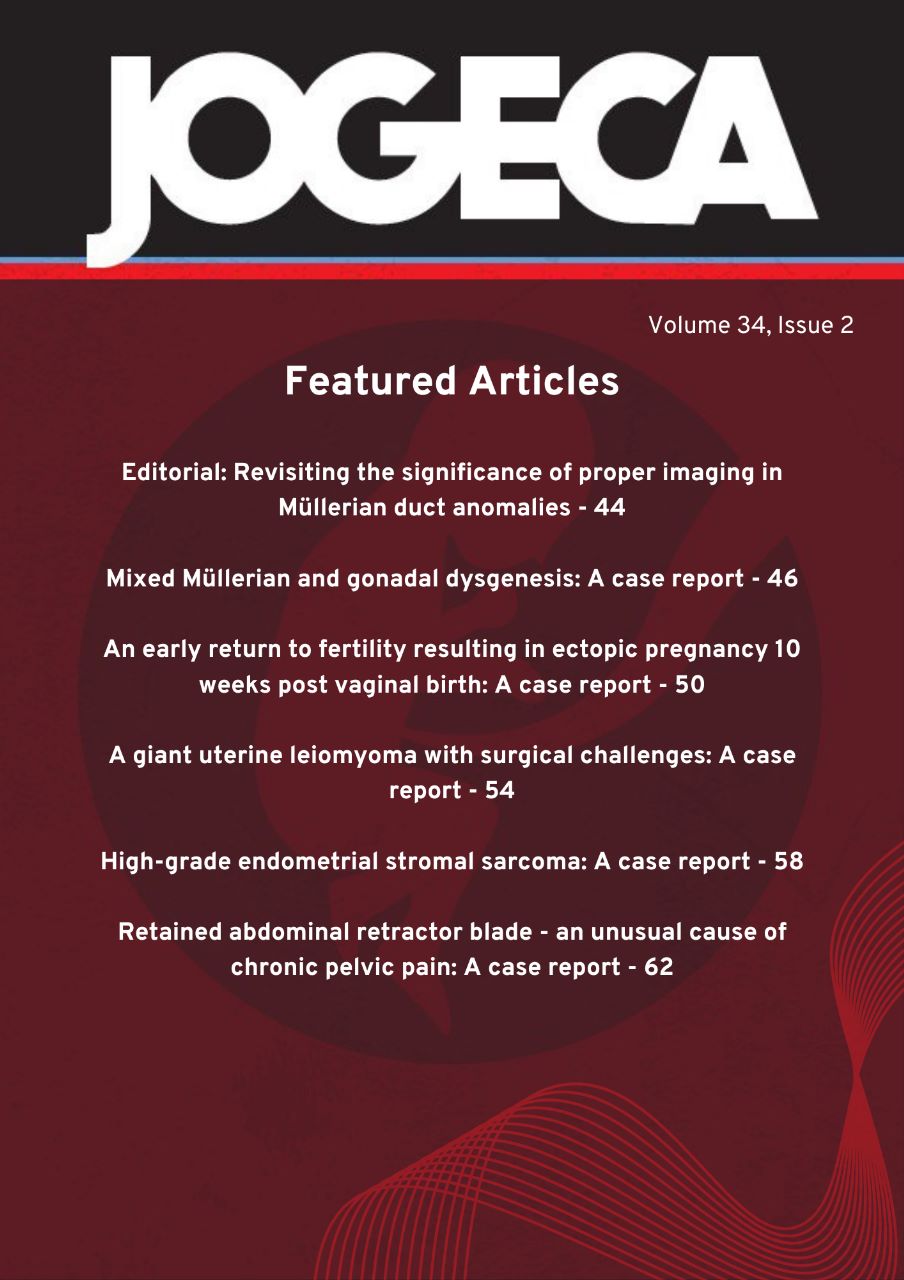ACCURACY OF THE URINE DIPSTICK VERSUS CULTURE TEST FOR DETECTING ASYMPTOMATIC BACTERIURIA IN PREGNANCY IN KENYA; A RETHINK OF THE TESTING STRATEGY?
DOI:
https://doi.org/10.59692/jogeca.v30i2.352Keywords:
Asymptomatic bacteriuria, urine culture, dipstick urinalysis, nitrite, leucocyte esteraseAbstract
Background: The quantitative urine culture, the “gold standard” test for detection of asymptomatic bacteriuria (ASB), is time consuming, expensive, requires special equipment and trained personnel thus limiting its routine use in low-resource settings. Although the dipstick test is cheaper, easier to perform and interpret, its accuracy and role in detecting ASB in pregnancy in this setting has not been evaluated.
Methodology: This was a cross-sectional study of pregnant women without symptoms of urinary tract infection, who were receiving routine antenatal care at Kenyatta National Hospital, in Nairobi Kenya. Clean catch, mid-stream urine specimens from 132 eligible participants were subjected to concurrent dipstick urinalysis and bacteriologic culture. Markers of ASB in urine dipstick (presence of either or both leucocyte esterase (LE) and nitrites) were compared with culture. Accuracy of urine dipstick, as measured from the sensitivity, specificity, positive predictive value (PPV), negative predictive value (NPV), positive likelihood ratio (PLR) and negative likelihood ratio (NLR) in detecting ASB was estimated using culture as the “gold standard.”
Results: Out of 320 women screened, 132 (41%) were eligible. Prevalence of ASB was 6.9%. Sensitivity, specificity, PPV and NPV were 66.7%, 74.4%, 16.2% and 96.8% respectively for LE; 44.4%, 97.5%, 57.1% and 95.9% respectively for nitrite; 22.2%, 100%, 100% and 94.5% for either LE or nitrite; and 88.9%, 71.9%, 19% and 98.9% for both LE and nitrite respectively. The PLR and NLR for LE was 2.61 and 0.45 whereas that of nitrite was 17.76 and 0.37 respectively.
Conclusion: A negative urine dipstick test rules out ASB in pregnancy and the need for routine culture. Positive dipstick test has low accuracy in detecting ASB in pregnancy and requires confirmatory testing with culture. This would avoid exposing pregnant women to unnecessary antibiotics and their side effects.
Downloads
Published
How to Cite
Issue
Section
Categories
License
Copyright (c) 2018 Authors

This work is licensed under a Creative Commons Attribution 4.0 International License.




